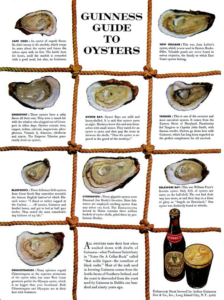Decoding Online Marketing Trends For Business Owners.
Online marketing is a field dominated by those creative and perceptive enough to plan ahead, anticipate changes, and jump on trends before your competitors do, so these trends are important to prepare for and utilize in 2017. You don’t have to use all of them, but you should be at least aware of their existence and learn how to use them if you want to beat the competition.
- Introduced by Pokémon Go, we expect to experience the continued use of Augmented Reality (AR). The Merriam Webster dictionary defines Augmented Reality as “an enhanced version of reality created by the use of technology to overlay digital information on an image of something being viewed through a device (such as a smartphone camera);also: the technology used to create augmented reality.” Augmented reality is the integration of digital information with the user’s environment in real time. Unlike virtual reality, which creates a totally artificial environment, augmented reality uses the existing environment and overlays new information on top of it.
Few people would have predicted that Pokémon Go would have taken off as radically as it did, earning $10 million a day in new revenue during its peak. Enthusiasm for it has largely died down, but the app has had two main effects on the online marketing community; one, it’s shown that users are ready for augmented reality experiences, and two, it’s given marketers a taste of the earning potential here. You can count on seeing more brands coming out with AR games, AR ads, and attempts to capitalize on AR apps that already exist.
Enthusiasm for it has largely died down, but the app has had two main effects on the online marketing community; one, it’s shown that users are ready for augmented reality (AR) experiences, and two, it’s given marketers a taste of the earning potential here.
- Live Video Streaming Will Fully Blast Off.
Social media users are beginning to demand more in-the-moment content, giving them a vicarious view into a world (or event) they’d previously been unable to access. Thanks to faster Internet and the pervasiveness of mobile phones, live video has become something of a trend on its own, with more and more platforms and apps giving some kind of “live streaming” functionality; even the first Presidential debate was streamed live, drawing millions of viewers in. Live video has been on an upward streak for the last few years, but it’s widely anticipated to fully take off in 2017, utilized by more brands, individuals and companies than ever.
- Data Visualization Tools Will Greatly Expand, As Will The Need for Data Visualization.
Even data analysts frequently have problems understanding exactly what the data is saying; our brains weren’t made to process vast amounts of raw numerical data this way. Now, technology is finally catching up to the “interpretation” part of data analysis; there are dozens of data visualization tools on the market already, but soon, every business is going to want to start using them– the ones who don’t, will be left behind at a significant disadvantage.
- Native Advertising Will Literally Explode in Popularity.
Native advertising is on an upward swing; as consumers continue to condemn or ignore most forms of conventional advertising, native advertising becomes a sneakier (yet effective) way to get those consumers’ attentions. Native advertising is paid content that matches a publication’s editorial standards while meeting the audience’s expectations. In non-editorial publications like Facebook or Twitter, Native advertising, is paid content that drives traffic to that content. At times it will contain these or similar words: “sponsored” or “sponsored by” or “paid for” or “paid post” “post by” or “promoted by”. Some have clear calls to action like “watch …” or “buy …” . We may also see newer, more improved forms of native advertising offered by major publishers, or brands who have previously opted not to offer this method of advertising. A classic example of product placement form of native advertising can be seen in things like the bottle of Red Stripe in the 1993 film The Firm.
Or the Coke cups American Idol judges drink from.
Or the Reese’s Pieces in the movie E.T.

5. Brands Will Increasingly Target Niche Markets Out of Necessity.
Online marketing is becoming more crowded; though the number of available consumers has remained more or less steady, millions of new businesses have flooded into the space for a piece of the same pie. This is especially true in the content and social media marketing spaces. A niche is a distinct segment of a market, like roofing, plastic surgery or extreme sports as a few examples. Targeting the audience or searching for that particular niche is where the advertiser will market its products or services, purportedly to an already interested audience, with the hopes of turning prospective consumers into actual consumers.
- We’ll See the Rise of ‘Immersive Experience’ Content Marketing.
Augmented reality (AR) and virtual reality (VR) are two technologies driving this mentality forward (and I’ve already mentioned AR), but don’t forget other ways of providing this immersive experience. You can offer 360 videos to make your users feel like they’re living in a moment, or host live workshops and webinars to get people to engage with you. Hence, the audience immerses itself in the event and the audience participation encourages a connection to the seller as well as the product & services being marketed.
- ‘Dense Content’ Will Become Essential to Cut Through the Content Noise.
Attention spans have fallen to goldfish-like levels, and we’re only going to grow more impatient and demanding as technology progresses. The potentially infinite scrolls of social media news feeds and endless streams of content from almost every brand and individual we follow have forced us to filter out the majority of messages we see as white noise. For example, text messaging has grown to almost eclipse email marketing. In response, more marketers are going to learn that dense content is key, making every word and every line count.
Conclusion
These are some of the upcoming trends based on the current information available, including last year’s trends, the introduction of new technologies, and how I see and hear marketers talking about marketing in 2017.
LocalAd Connection
1700 E. Sunrise Blvd # 1213
Ft Lauderdale, Florida 33304
Call Us Today: (USA) 1-954-266-0078
Call Us For More Info: (954) 266-0078
Copyright Disclaimer: Under Section 107 of the Copyright Act 1976, allowance is made for “fair use” for purposes such as criticism, comment, news reporting, teaching, scholarship, and research. Fair use is a use permitted by copyright statute that might otherwise be infringing. Non-profit, educational or personal use tips the balance in favor of fair use.


